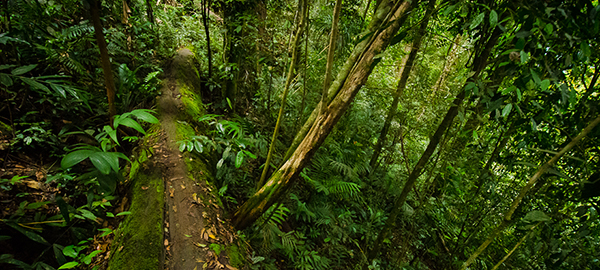Lost in the Jungle
Lost - Part 1 : The Plan
Lost - Part 2 : Mistakes
Lost - Part 3 : Dehydration
The Plan
The plan was to start from Ulu Kinta and head to the start of the trail before making our way to Camp Seroja and then on to Camp Kijang. From there we would have gone on to the waterfall & LWP (Last Water Point) before reaching Mount Botak (elevation : 1817 m) which lay just before the summit of Mount Korbu (elevation : 2183 m) and Mount Gayong (elevation : 2173 m) - which were both members of the exclusive G7 group of mountains. From there we would have made our way east again to Mount Junction (elevation : 2071 m) and Mount 6850 (elevation : 2088 m) and then south to h50 and Camp Kuali (LWP). Mount Yong Belar (elevation : 2181 m) and Anak Yong Belar lay just after. Continuing on would have brought us to Camp Tudung Periuk, Gurkha Peak and Camp Gurkha before reaching Mount Challi (elevation : 1922 m). Mount Tiga Negeri, which is also known as 'Triangle' and '3 Boundaries' (elevation : 1764 m), and 6040 Peak would have been the last two summits before the trek ended at the Blue Valley Dam in Cameron Highlands on the other side of the Titiwangsa Range. This route is called the Trans-Titwangsa V1 and we were going to tackle it without a guide.
Impediments began to crop up right from the beginning. Upon arriving at the Tanjung Rambutan Police Station (contact via +605-533 1222), where we were required to go to report in before the trek, we were told that we were unable to proceed without having obtained a permit from the Batu Gajah Forestry Department (Jabatan Perhutanan Batu Gajah) beforehand. What made things even more exasperating though was that the Forestry Department was apparently not open on the weekends.
Getting There
Since we had driven all the way from KL, we decided to head to the start of the trail nonetheless. It was fairly close to the Tanjung Rambutan Police Station with the road leading to the Ulu Kinta Dam located just after a left turn (heading east) at the major crossroads that lay to the south on the way back to Tambun. After a series of very fortunate events, we ended up finding ourselves with access to the Ulu Kinta dam (despite not having a permit and the gates having been locked) and after parking the car at a clearing that lay beyond the dam and next to the Ulu Kinta river, we began to head down the path that marked the beginning of the trek.
Leeches

We set off down the path quite late at 11:39 and walked alongside the Ulu Kinta river that lay to our right (although it could not be seen from the path). The trail itself was pretty muddy at points and was completely infested with ubiquitous leeches (Order : Hirudinea) so much so that at one point when I stopped for a leech check, I ended up finding around 10-12 leeches per foot around my ankles and in my shoes. I actually only found out recently that the best way to remove a leech was to use a blunt object to break the seal of the oral sucker and then to go on and do the same at the anterior end before flicking it away. This is because leeches don't burrow into the skin and thus won't leave the head in the wound as is commonly believed. The method that most people seem to use (using heat rub, salt, alcohol, a flame or a cigarette) can actually end up doing more harm as the leech can end up regurgitating the contents of its stomach back into the wound which would leave the wound vulnerable to infection. Leeches also release an anticoagulant called hirudin which will extend the time it takes for the blood to clot.
The trail remained fairly muddy and was wide for the most part until it intersected with the river. The first stream that we crossed was located about 1.8 km from the start of the trail and was reached in just under 38 minutes, and 750 metres of walking from this point brought us to the first major river crossing. Just after this point things started to go very wrong...

Next : Lost in the Jungle (Part 2)
Malaysia Overview





